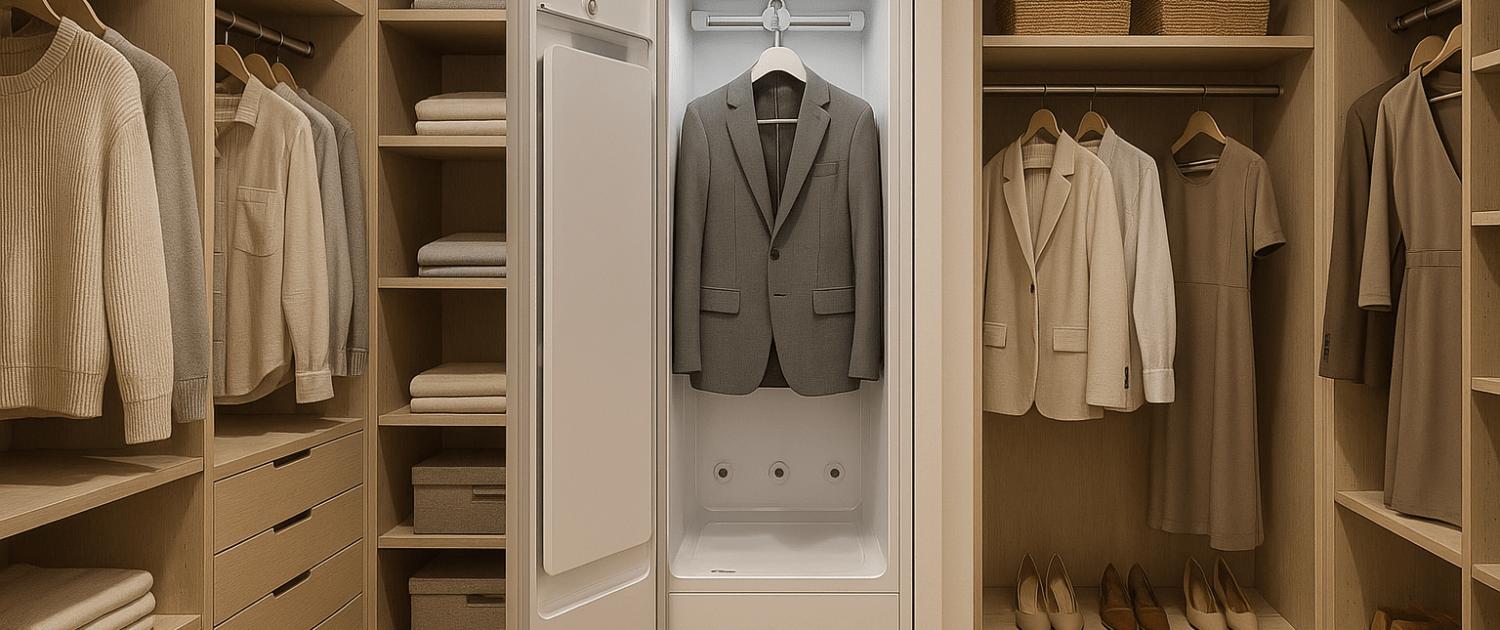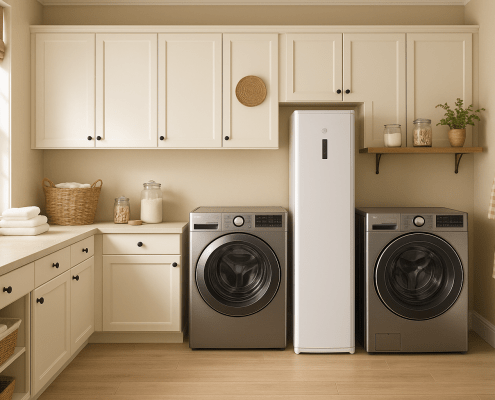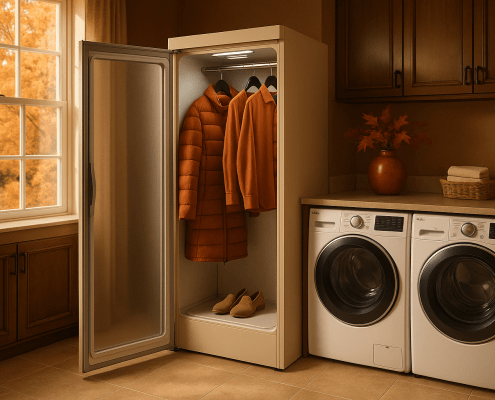Laundry Steam Closet Getting Too Hot? Here’s How To Fix It
Steven E / Wednesday July 9, 2025
If your steam closet seems way hotter than it should, or it even shuts down because of overheating, it’s time to take a closer look. The good news? You can usually troubleshoot and fix an overheating steam closet yourself with just a little know-how. Here’s how to get your closet back to safe, efficient operation.
The information in this article may not apply to your specific appliance model. We recommend consulting your manufacturer’s documentation or contact us with any questions.
Why Is My Steam Closet Overheating?
When a steam closet works properly, it keeps the internal chamber at a carefully controlled temperature and humidity level. If it’s overheating, that means something has gone wrong with one or more of its control systems.
Here are the most common causes:
- A faulty thermostat or temperature sensor
- Stuck heating element or relay
- Clogged vents restricting airflow
- Dirty or failed fan motor
- Malfunctioning control board
You can pinpoint the issue by following the steps below.
What You’ll Need
Before you get started, gather these supplies:
- Multimeter (for electrical testing)
- Screwdrivers (flathead and Phillips)
- Microfiber cloths
- Warm soapy water
- White vinegar (for descaling if needed)
- Soft brush or vacuum
- Replacement thermostat, sensor, fan, or control board (if necessary)
And always remember: unplug the steam closet before you begin any disassembly or repairs.
Step 1: Confirm the Problem
First, run a short cycle and observe what happens:
- Does the closet feel excessively hot to the touch?
- Do clothes come out overly damp, burned, or smelling scorched?
- Are you getting an error code related to temperature?
If so, unplug the closet and let it cool completely before proceeding.
Step 2: Check the Thermostat and Sensors
The thermostat and temperature sensors monitor and regulate the heat inside the closet. If one fails, the heating element may stay on too long and overheat the chamber.
How to test:
- Unplug the closet and remove the back or bottom panel to locate the thermostat and sensors.
- Use your multimeter to check continuity. A faulty thermostat will often show as an open circuit when it should be closed.
- Inspect the sensor for visible damage or corrosion.
How to replace:
- Unscrew and disconnect the faulty thermostat or sensor.
- Install the replacement and reconnect the wiring securely.
- Reassemble and test the closet.
Step 3: Inspect the Heating Element and Relay
Sometimes the heating element itself or the relay controlling it can fail in the “on” position, causing constant heat.
What to check:
- Look for scorching or damage on the heating element.
- Test the element’s resistance with a multimeter; if it’s shorted, it may overheat.
- Check the relay (on the control board) for signs of burning, pitting, or sticking.
If the heating element or relay is defective, replace it with a part that matches your model.
Step 4: Clean and Inspect the Fan
Airflow is critical to keeping the steam closet at a stable temperature. If the fan is clogged, dirty, or has stopped working, heat and moisture can build up.
How to clean:
- Remove the fan cover and vacuum or brush away dust, lint, and debris.
- Spin the blades by hand; they should turn freely without resistance or grinding.
- Plug in the closet and briefly run it to see if the fan spins (be cautious with live power).
If the fan motor is weak or nonfunctional, replace it.
Step 5: Check and Clean the Vents
Clogged vents can trap hot air inside the chamber and make the closet seem like it’s overheating.
What to do:
- Use a soft brush or vacuum to clean out all interior vents.
- Check the exhaust path for blockages.
- Wipe down interior surfaces with a damp microfiber cloth to remove residue that could restrict airflow.
Step 6: Inspect the Control Board
The control board acts as the “brain” of the steam closet, managing all heating and timing functions. If it’s malfunctioning, it may send too much power to the heater or fail to shut it off.
What to check:
- Look for visible damage like burned spots, swollen capacitors, or loose wires.
- If the board appears damaged or nothing else has solved the problem, replacing the board may be necessary.
Step 7: Run a Test Cycle
Once you’ve repaired or replaced any faulty parts, reassemble the closet and plug it back in. Run a short test cycle with a single garment. If all looks good, you’ve successfully fixed the overheating problem.
Where To Find Us
If you need any replacement parts for your appliances, you can enter your model number at AppliancePartsPros.com to locate and order them quickly. Most orders arrive in just two business days, and we have tons of great information in our repair help section and YouTube videos to help you troubleshoot.
Stay connected with the latest DIY tips, tutorial videos, and repair guides by following us on Facebook, Instagram, and Twitter. We love hearing about your repair stories and successes. If you need more help or want personalized guidance, feel free to reach out. We’re ready to help you take on your next project with confidence!
With nearly a decade of experience in providing top-notch customer service regarding appliance parts and repair, Steven enjoys sharing practical advice, troubleshooting tips, and interesting information to help readers stay informed.





